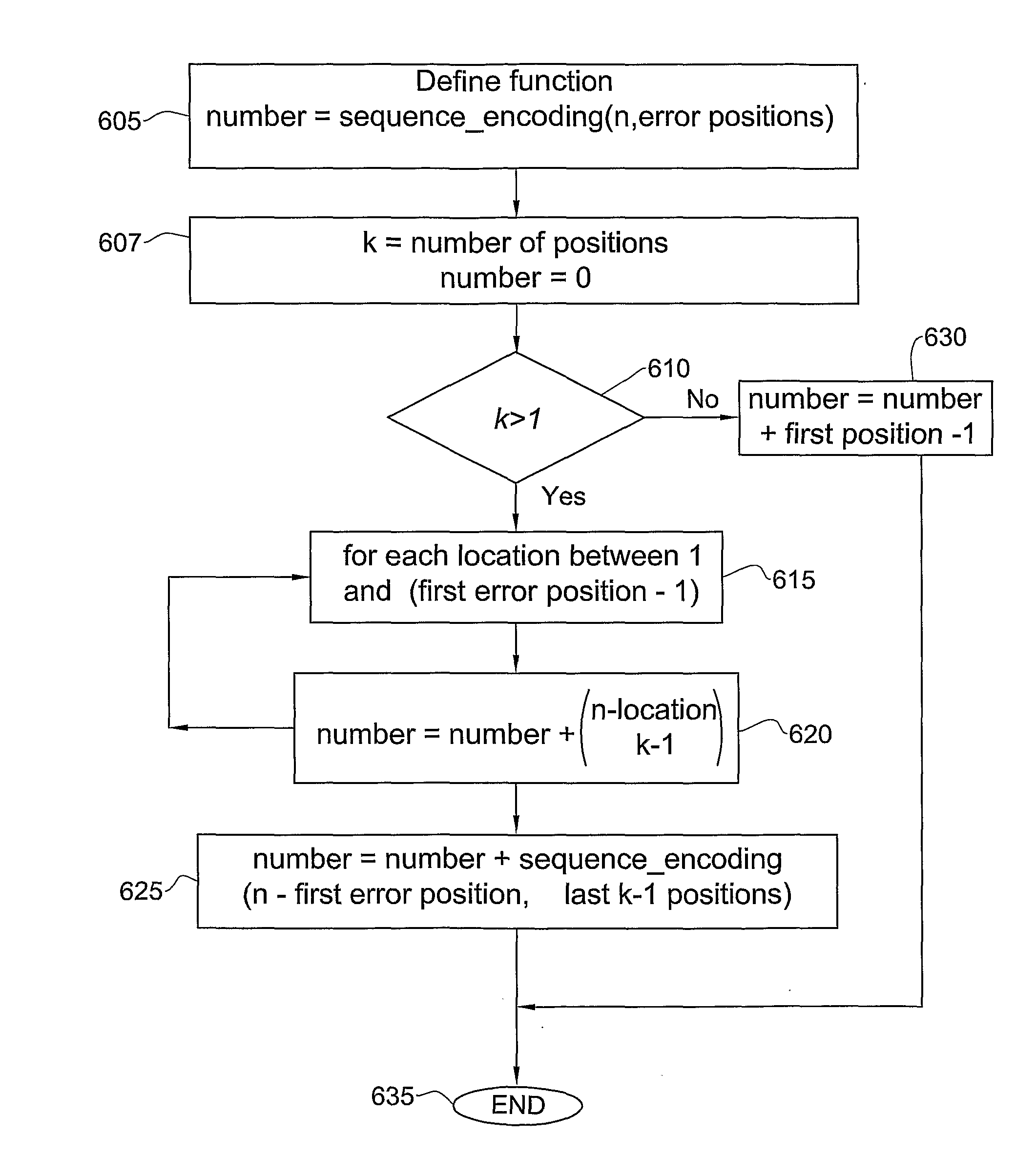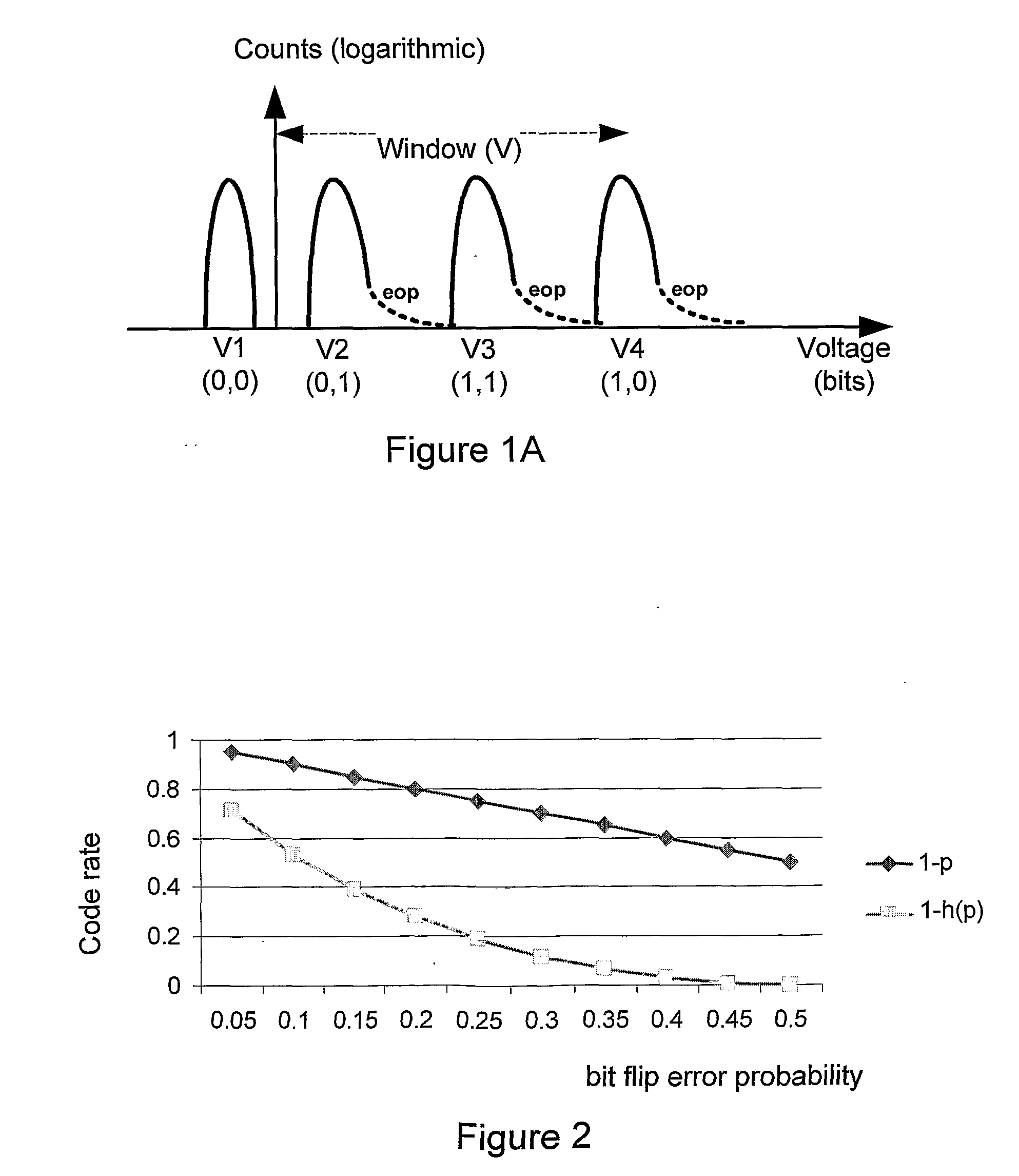Systems and methods for handling immediate data errors in flash memory
a flash memory and error handling technology, applied in the direction of memory address/allocation/relocation, instruments, coding, etc., can solve the problems of detection errors, bit error rate, and decrease of device reliability, so as to increase the bit error rate, enhance the effect of inaccuracy effects, and high density
- Summary
- Abstract
- Description
- Claims
- Application Information
AI Technical Summary
Benefits of technology
Problems solved by technology
Method used
Image
Examples
second embodiment
[0067]A second embodiment, as shown in FIG. 3, is to allocate an additional program level which will be denoted as an erasure level at each program symbol. The erasure symbols may be denoted by the top program level. The locations of erratic over-programming are then marked by doing a second programming procedure which raises the program levels of the erratic over-programming locations to the top level. FIG. 3 is an example of a case of a multi-level cell with 4 program levels and one erasure level marked as V5. More generally, a region between any two program levels may be deemed an erasure region. The program window may be divided into multiple erasure regions interspersed with multiple symbol regions figures shown in FIG. 3. In FIG. 3, by way of example, there are four erasure regions marked E1, E2, E3 and E4. The levels are tuned according to the erasure coding capability. If a specific cell's programmed level lies in the erasure region above it, or in any of the regions above t...
first embodiment
[0070]FIG. 1B is a simplified functional block diagram of a flash memory system constructed and operative, in accordance with the present invention, to identify and rectify data errors which occur while the temporary memory from which the data was read, still exists. As shown, the system of FIG. 1C includes a host 100 interfacing with a flash memory device 105 including a microcontroller 110 (some or all of whose functions may alternatively be performed by an external microcontroller connected between the flash memory and the host), and one or more erase sectors 120 each having one or more physical pages 130 each of which comprises a plurality of data cells 140 as well as non-data cells 121. Also included is erasing circuitry 150, writing circuitry 160 and reading circuitry 170. The microcontroller 110 finds known errors by reading back data from cells 140 while original host-supplied data is still available for comparison. The non-data cells 121 are operative to store management in...
third embodiment
[0072]FIG. 1D is a simplified functional block diagram of a flash memory system constructed and operative, in accordance with the present invention, to identify and rectify data errors which occur while the temporary memory, from which the data was read, still exists. In the embodiment of FIG. 1D, the microcontroller 110, or an external controller, finds known errors by reading back data from cells 140 while original host-supplied data is still available for comparison, re-writes data replacing known errors with dummy values and appending correct values, and, during reading, replaces dummy values with appended correct values. Non-data cells 121 typically store management info, redundancy info and content for cells found to be in dummy state, all as described in detail below with reference to FIGS. 9-10. In this embodiment, the data cells 140 have n data states plus one additional dummy state earmarking cell as suffering from known error.
[0073]A first embodiment of erratic over-progr...
PUM
 Login to View More
Login to View More Abstract
Description
Claims
Application Information
 Login to View More
Login to View More - R&D
- Intellectual Property
- Life Sciences
- Materials
- Tech Scout
- Unparalleled Data Quality
- Higher Quality Content
- 60% Fewer Hallucinations
Browse by: Latest US Patents, China's latest patents, Technical Efficacy Thesaurus, Application Domain, Technology Topic, Popular Technical Reports.
© 2025 PatSnap. All rights reserved.Legal|Privacy policy|Modern Slavery Act Transparency Statement|Sitemap|About US| Contact US: help@patsnap.com



